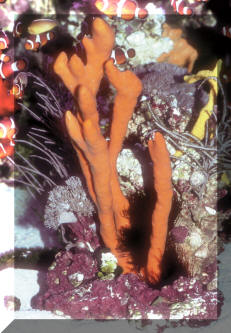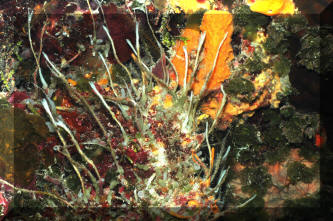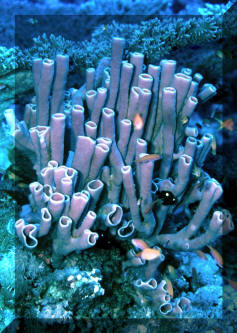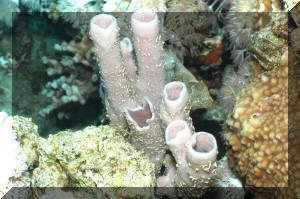|
Related FAQs: Sponges, Sponges
2, Sponges 3,
Sponges 4, Sponge Identification, Sponge ID 2, Sponge ID 3, S Sponge ID
4, Sponge ID
5, Sponge ID 6, Sponge ID 7, Sponge ID
8, Sponge ID 9, Sponge ID 10, Sponge ID 11, Sponge ID 12, Sponge ID 13, Sponge ID 14, Sponge ID 15, Sponge ID 16, Sponge ID 17, Sponge ID
18, Sponge ID 19,
Sponge ID 20, Sponge ID 21,
& Sponge Selection, Sponge Compatibility, Sponge Systems, Sponge Feeding, Sponge Disease, Sponge
Reproduction,
Related Articles: Invertebrates, Live
Rock, Ascidians/Sea Squirts,
Review of
Tyree's "Cryptic Filtration" Book
/The Best Livestock For Your Reef Aquarium:
Sponges, Phylum Porifera, Part 7
To: Sponges
Part 1, Part
2, Part 3, Part 4,
Part 5, Part 6,
Part 8,
Part 9, Part 10,
|
|
|
By Bob Fenner
|
|
Genus Pseudocerasina:
Genus Ptiocaulus:
| Ptilocaulis sp. Red-Orange Branching
Sponges. These are branched, upright colonies whose appearance is
bumpy-rough. Not common but found in the Caribbean, Bahamas, rarely
in Florida. Generally found near coral reef tops, especially near
drop-offs, in 40 to 80 feet depths. Eight to fifteen inches in
height. Aquarium photo. |

|
| Rhaphidophlus juniperinus Cozumel |
 |
| Siphonochalina sp. Red Sea. About four
feet tall. |

|
Bigger PIX:
The images in this table are linked to large (desktop size) copies.
Click on "framed" images to go to the larger size. |
 |
To: Sponges
Part 1, Part
2, Part 3, Part 4,
Part 5, Part 6,
Part 8,
Part 9, Part 10,
|
|

